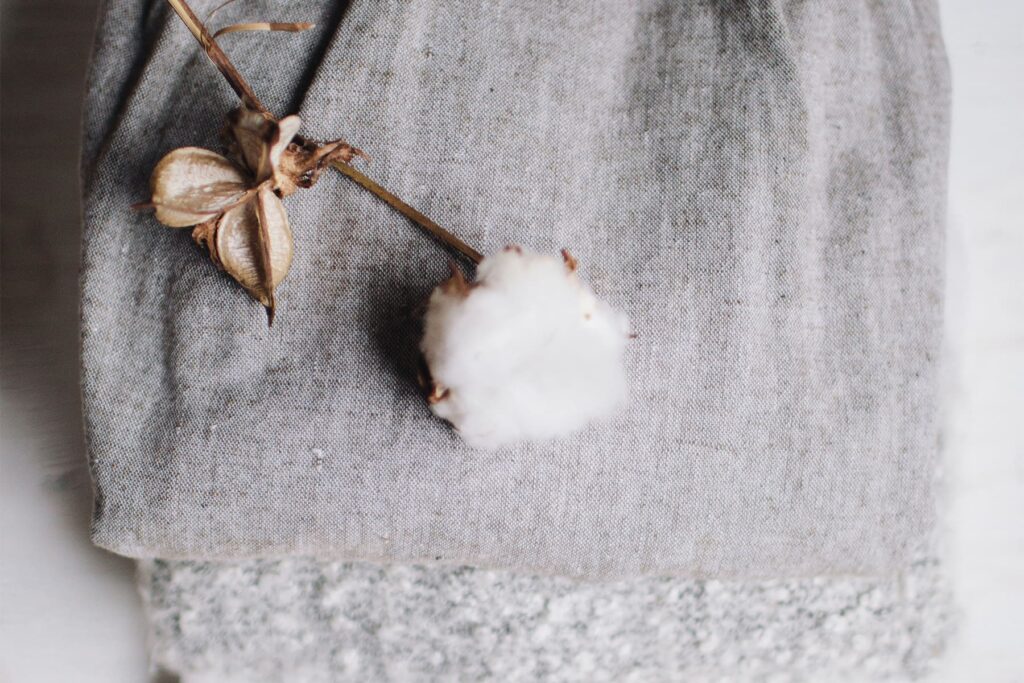Consumers are being duped by false claims of high quality, high thread count sheets and bedding. Wondering what to believe and who to trust, they’re asking: “How can you tell the difference between truly ‘fine linens’, and those that aren’t?”
Price as an Indicator of Quality
It’s a fact: there’s no such thing as a high quality, high thread count sheet set that retails for $150.00.
Let’s do the math. Say you buy cotton fabric at $5.00 a yard at a fabric store, which is cheap compared to other fabrics, doesn’t include a (costly) Jacquard or printed pattern, probably has a ‘nappy’ feeling, and is still less than wholesale prices of premium cotton. Even using this rock-bottom price example, here’s how it adds up:
One solid-color queen size sheet requires at least 8 yards, using the U.S. Standard of 54 inches per yard width. At $5.00 a yard, that comes out to a whopping $40.00 per sheet. Double that for two sheets, add two standard pillowcases requiring another three yards of fabric, and the sheet set now already costs $95.00 in raw materials alone, excluding overhead costs such as equipment and labor for sewing, ironing, packaging and shipping.
This exercise quickly shows that in order for manufacturers to sell sheet sets at low prices, they must first start with sub-standard quality cotton. For consumers, it means you will indeed get what you pay for. The bottom line is: cheap prices = inferior linens almost always, and are never a “good deal”.
To illustrate further with this little-known fact: it takes a solid week, working an eight hour shift five days a week, for a single factory worker in Italy to complete ONE sheet set that includes embroidery or lace, even with using state-of-the-art weaving machines.
How can sheet sets be sold so cheaply by discounters who also claim high thread counts? Besides using inferior cotton, they rely on cheap overseas labor, weaving and finishing short cuts and tricks, and/or all of the above.
The Truth about Counting Threads
Prior to Discounters entering the market, we retailers depended on “thread counts” to help tell our linen stories. Thread count simply means the number of threads per square inch. The higher the thread count, the higher the quality. Makes sense, right?
But what happened is-
Discounters began using several, innovative manufacturing methods in order to legally advertise high thread count sheets at a low cost. One way they do this is by layering one inferior ply on top of another, which doubles the thread count, but also results in a stiff and uncomfortable sheet. (Also called a double ply sheet as opposed to a single ply sheet). Another trick used is weaving short, brittle strands of cotton and squeezing all they can into each square inch. Then there are manufacturers who count threads that run both weft and warp, (sideways and up and down), instead of counting the number of threads that run in the same direction. So one manufacturer’s 200 thread count sheet can easily become another’s 400 thread count sheet. Further: since Italy has become synonymous with high quality weaving, some Manufacturers are resorting to importing cotton from third world countries and sewing it in Italy to be able to claim that their product is not just a high thread count, but “Made in Italy”, too! No wonder consumers are confused…
However, comparing thread counts on truly fine linens continues to be helpful in determining quality levels.
In the meantime, many manufacturers are now opting to “lose count”; choosing instead to extoll the virtues of quality cotton. We retailers, in turn, have likewise ‘gone back to school’ so that we can further educate consumers, too.
The Most Important Truth: Quality Cotton
Even though thread counts alone don’t tell the quality story, the following does:
The best linens are woven with single ply, long staple cotton – cotton strands that are long and strong. The longer the strand, the softer the finished product will be, but which is also determined by:
Where cotton is grown, weather conditions, & weaving skill.
Weaving a fine linen product is like following a recipe: if you have the right equipment, but not fresh ingredients, the end result will be compromised. With cotton, where it’s grown and weather conditions matter. Even so, some cotton grown in prestigious cotton regions, such as Egypt, does not automatically translate in to a quality product, as we’ll explain next. Likewise, it’s also true that high-quality cotton is being cultivated in other parts of the world.
The third, most important ingredient is how cotton is woven and finished. Even high quality cotton fibers can be ruined with a poor finish. What that means to consumers is: yes, you can own a high thread count sheet, but still end up with an uncomfortable night’s sleep, and/or a product that starts to deteriorate after a few washings. That’s because of how it’s finished.
The Truth about Finishing Cotton
Cotton must be combed well, the weave must be tight but not too tight and even, and it must be supervised by an artisan who knows what they’re doing. The best linen artisans in the world are in Europe, especially in Italy, France, Germany, Switzerland, and Belgium—whose skills have also been proudly passed on from one generation to the next, thus ensuring a high quality product.
To sum: quality of a cotton product is determined by where cotton is grown, how long the staple is, weather conditions, and how it’s finished. Once these standards are met, thread count then becomes a useful tool for determining levels of quality.
WE ARE HERE TO HELP! Contact us at info@fionasatelier.com

